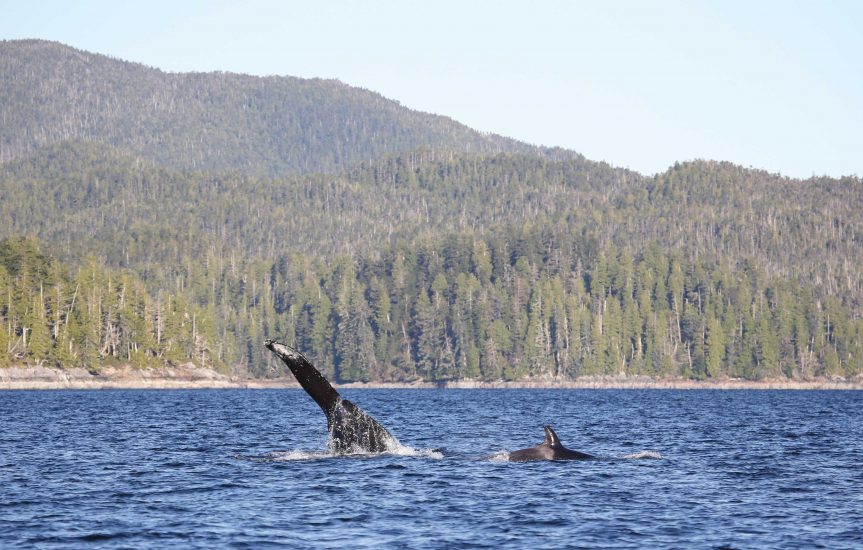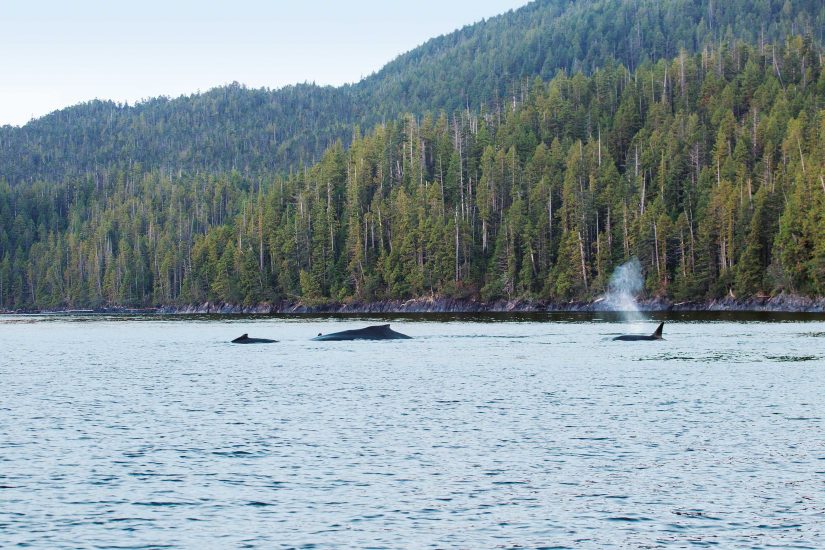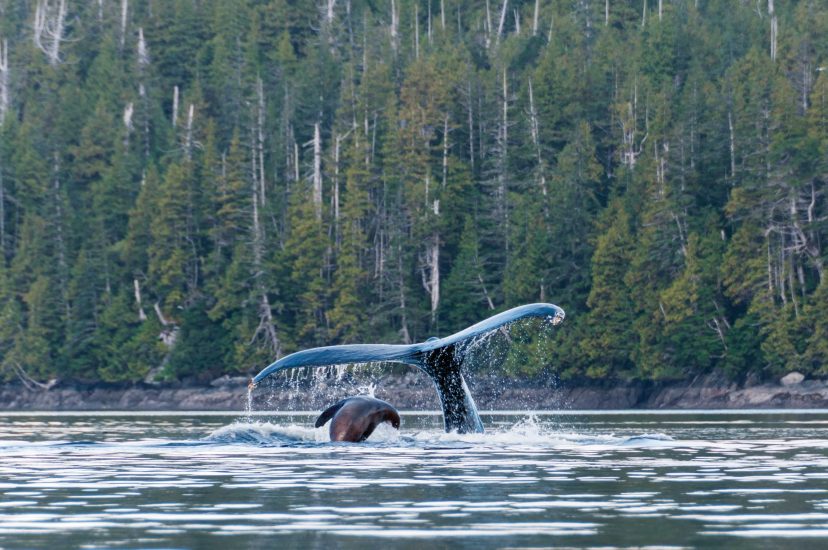A helping fluke
Would a whale take on the most dangerous predator in the ocean to help another animal – sometimes even an animal of a different species? Janie Wray discusses whether humpbacks could be doing just that.
My emotions were intense when I first witnessed a pod of transient orcas chasing a group of sea lions. When you add to this encounter two humpback whales that, from my perspective, had charged in to protect their marine companions, my mood changed entirely. I was torn, especially when the tables turned and suddenly one of the humpbacks had become the orcas’ new target. This did not last long, though, as the other, larger humpback suddenly flanked the younger whale. Its one-ton pectoral fin with razor-sharp barnacles and its massive tail flukes slammed the water and the transients, deterred, were soon on their way. Stories like this are becoming more common around the world, causing people to wonder about interspecific relationships and the altruistic behaviour of humpback whales.
Transient orcas prey on marine mammals, and a study that reviewed 115 interactions between them and humpback whales has recently been published. The results are both extraordinary and tantalising, leaving room for further exploration. Very few records exist of transient orcas hunting humpback whales. They are known to target smaller cetaceans and marine mammals such as porpoises, dolphins, seals and sea lions. It is possible that in pre-whaling times, when the abundance of humpbacks was much higher, transient orcas may have preyed on these whales without our knowing about it. Now, as the population of humpbacks continues to increase, we may be witnessing the return of a once-lost behaviour.
Among the humpback calves returning to northern feeding grounds after their long migration from the south, we have noticed a definite increase in the number of them that have obvious rake marks from orca teeth on their tail flukes and pectoral fins. In 2013 we observed a female humpback with her new calf, a male, and were stunned to see the large number of rake marks all over the young whale. It was surprising that he had even survived. We could also see recent rake marks on the mother’s fluke. We imagined she must have put up quite a battle to protect her little one. We named the calf ‘Champ’ as he had clearly survived a life-threatening encounter. We also noticed that he loved to breach all the time and decided that he was probably practising this manoeuvre in case of another attack.
This type of experience at a young age could certainly explain why an adult or sub-adult humpback might charge in to protect its own kind from a group of transient orcas. Interestingly, though, on 85% of the occasions when humpbacks respond to an attack by transients, they defend species other than their own. These interactions most certainly come at some cost for the humpback and appear to be maladaptive, since they too are a target for transients. So why do they behave in this way?
It is possible that the behaviour is a territorial response on the part of these whales. The humpbacks we have catalogued demonstrate strong site fidelity, so much so that we refer to most of them by name. We have observed social bonds between members of this population that extend well over a decade, as well as mothers that have brought their third or fourth calves to these waters. This population has grown from 42 to more than 400 and relies on the pristine waters around the Great Bear Rainforest as its summer feeding ground. As in many species that maintain the same habitat range year after year, an instinct to charge at a known predator may have evolved. Humpbacks may respond to the distinctive calls of transient orcas without knowing what species is at risk during the hunt. Once they arrive, the act of chasing the transients away could still benefit the humpback population, even if they are not defending one of their own kind or if the kill has already occurred. If this behaviour is repeated throughout the season, hindering the transient orcas’ ability to feed, chances are that the predators would travel elsewhere to forage. As a result, there would be certain safe areas in which young humpback whales are able to live without the constant fear of an attack by transients.
Cetacea Lab: A Voice For Whales
Janie and Hermann are working for the protection of Orcas and Humpback Whales in the Great Bear Rainforest by tuning into underwater hydrophones and deciphering the secret language of these majestic animals.




